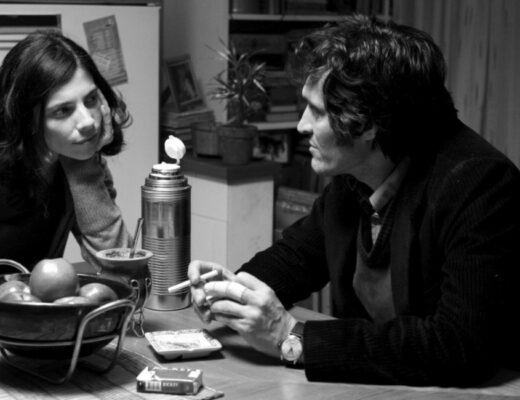Llosa does her best to capture the delirium of the source material, but Fever Dream can’t quite sustain its dizzying, eerie tenor.
Claudia Llosa’s Fever Dream is a film that certainly seeks to live up to its title, building from its eerie source material an delirious, enigmatic psycho-mystery. Based on Samanta Schweblin’s novel of the same name — pointedly titled Distancia de rescate (or The Rescue Distance) in its original Spanish, as is Llosa’s film on screen — Fever Dream opens with a young mother, Amanda (María Valverde), on a forest floor, unable to see, complaining of feeling worms on and in her body, and being dragged by her ankles by an unseen presence. She is being implored by a whispered voice to “remember” and “go back to the beginning.” The voice belongs to David (Emilio Vodanovich), a young, strange boy who we come to find is the son of Amanda’s new friend, Carla (Dolores Fonzi), who she has recently met on her vacation to the countryside. And in these earliest minutes, as David’s instructions lead Amanda to cycle through recent memories — which is what the film mostly consists of — Llosa is able to approximate the novel’s pervasive sense of disquietude and confusion, refusing the viewer any chance to orient as scene and setting shift abruptly again and again, like thumbing a rolodex at speed.
After this initial frenzy, the film settles into a more linear progression, but Llosa takes care to paint with formal strokes that seek to maintain this initial tenor: many of the compositions here are captured in the limited golden hour light of dusks and dawns, the otherwise verdant images muted and partially obscured by shimmering halos; close-ups of faces and feet linger on corporeal minutiae as characters struggle with understanding their mysterious circumstances and unwelcome feelings; bodies are glazed with sweat and dripping water, a kind of light luridness informing each new narrative beat. Indeed, what Llosa renders here is something of a phantasmagoria, slotting in somewhere between the overt sensationalism of Lee Daniels’ The Paperboy and any of the litany of softly mythological, jungle-set Latin American films that have surged across the past decade. But while this pulpy sheen keeps Fever Dream appealing in its light grotesquerie, its narrative nonetheless falls into an inertia, even at a relatively brisk 90 minutes, most of its back-half stuck in a waiting pattern until the “reveal” of its conclusion, never able to reclaim the dizzying whirlwind of its opening sequence. The details mostly involve Carla’s, and subsequently Amanda’s, fear of David, who has never been the same after he was poisoned as a child and healed by a local woman with rumored supernatural abilities, but the encounters Llosa devises here largely play out with the (lack of) subtlety of The Good Son or John and the Hole, a development at odds with the film’s otherwise mystifying character.
Meanwhile, the conceptual crux of the novel — which approximately lands in Erin Brokovich or Dark Waters territory — is mostly left implied in Llosa’s film despite its explicit articulation in Schweblin’s hands, and the director instead opts for thematics that tilt more toward the film’s Rescue Distance title, alternating notions of parental paranoia with suggestions of mental illness. It’s a fine enough pivot, and perhaps more ably suits the director’s formal choices, but it’s consistently, if not fatally, undermined by the film’s protracted second half. Schweblin’s novel, through its economical, cryptic language, succeeds in accelerating dread across its short page count, ratcheting the tension until its final moments and mining banal reality for nightmare, similar to the works of John Darnielle, or even like a Stephen King novel that resisted crescendoing into the supernatural. Llosa’s Fever Dream, for all its strengths, follows an opposite trajectory, the lasting impression one of a film-length denouement, appealingly befuddling and intermittently creepy, but playing out on a distinct, if gradual, downward slide. In adapting a work that so thrives according to its formal linguistic skill, Llosa’s translation is surprisingly adept. But as is so often the case with such endeavors, you’d be better served by the book.
You can currently stream Claudia Llosa’s Fever Dream on Netflix.







